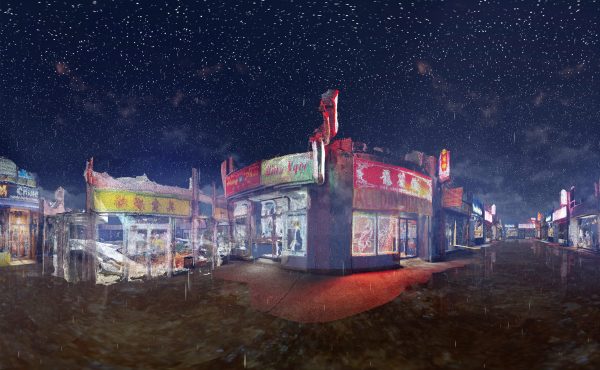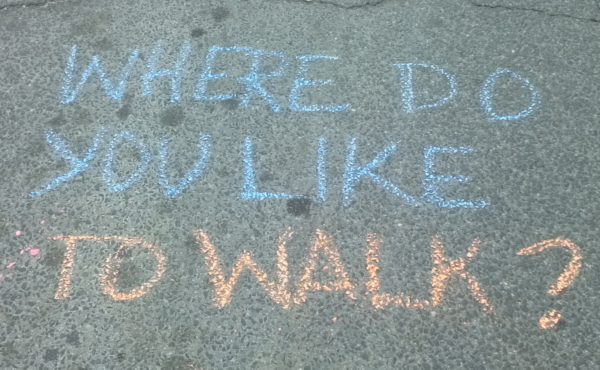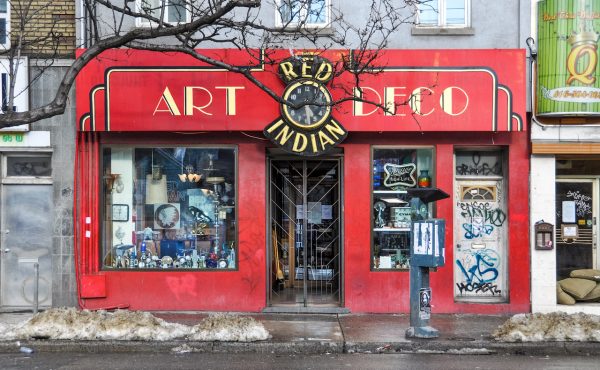
The second annual Jane’s Walk will be held on May 3 and 4. In anticipation of the event, Spacing will be highlighting some of the unique walks. Spacing is a founding partner in Jane’s Walk.
– – – – – – – – – – – – – – – – – – –
In homage to Queen Street, Jane’s Walk has organized a series of walks that explore this dynamic and diverse corridor from end to end. The aim of these walks is to visit the landmarks, meet the people, and delve into the histories that have shaped the path for Queen Street.
PARKDALE
In Parkdale with Two Politicians, participants will get the chance to see first hand a resilient and thriving community. In the early 20th century Parkdale, which roughly runs along Queen and King Sts from Dufferin St. to Roncesvalles Ave., was an affluent neighbourhood that prospered from its proximity to Lake Ontario and Sunnyside Beach. However, the building of the Gardiner expressway drove changed the character of the area, driving residents away and deteriorating the local economy. Today, Parkdale is home to new immigrants and artists. Tour leaders Peggy Nash and Cheri DiNovo will explore the unique challenges affecting this community, including: the deterioration of residences, tensions between tenants and landlords, and the attempt to bridge the dysfunctional relationship with government.
QUEEN WEST TRIANGLE
The Queen West Triangle is made up of several industrial buildings located just south of Queen St. between Dovercourt Rd. and Duffering St. During the mid- to late-90s, the area became home to an influx of artists, and quickly became for its bohemian appeal. Recent plans to build condominiums in the neighbourhood have threatened the unique lifestyle and vibrancy of the Triangle. In the Queen West Triangle walk, community activist and resident Brad Donner will lead a fun and educational tour that aims to reconcile the neighbourhood’s rapid development and gentrification with it’s artistic and grassroots movements.
WEST QUEEN WEST
“How do the rates and scales of neighbourhood change accommodate diversity? West Queen West is a unique space where different people have been able to express their identities and have their needs served (for play, work, residence, health, and community). The physical space is layered, reflecting multiple personal and collective histories. Evidence includes a hotel offering weekly rates beside a luxury McTownhome complex, and a soup kitchen adjacent to day spas. On the Marginal spaces and modish places: tensions and curiosities of neighbourhood change on West Queen West tour, Michelle Drylie and Mia Hunt will highlight the coexistence of old and contemporary urban forms and uses. They will also consider how new tensions have emerged with increased rates of change and new scales of (re)development, which in some cases fail to serve a diversity of the population and further disempower marginalised groups.â€
QUEEN WEST 1: NOOKS AND CRANNIES
In Walk to Work with Adam Vaughn, you do just that! You get to join Councillor Adam Vaughn as he walks participants through his daily route to work. “Neighbourhoods, cultural facilities, city services, coffee shops, bars and heritage buildings and new development are woven artfully together†along the stretch of Queen St. from Bathurst St. to City Hall. Join Vaughn as he winds through the side streets, north and south of Queen, that “that provide some of the most interesting perspectives on the past and directions for the future.â€
QUEEN WEST 2: THE 30 YEAR MAKEOVER
In 1975, Queen St. between University Ave. and Bathurst St. was home to one of Toronto‘s most infamous punk-infused counterculture. Now, 30 years later, this stretch is home to mainstream retailers, chic restaurants, and (in a little while) a big box store. But, even as gentrification takes hold of this neighbourhood, some of the original merchants and inhabitants have remained, whilst maintaining the diversity and edginess that Queen West is known for. Join Andre Rosenbaum, Carson Foster and Gary Duke for Queen St. West from Bathurst to University: From Demimonde to Strip Mall — the Thirty Year Makeover, where they will explore the history and future of this changing community.
QUEEN STREET
Explore the challenges Queen St. presents to urban planners. This is an interesting thoroughfare of pedestrian and road traffic, where those who live in the neighbourhood are outnumbered by those using Queen St. by 50 to 1. This is an interesting community: it carries a Historic District designation, but lacks a local Business Improvement Association. In Planning Queen, walk leader Max Allen will point out the particular development challenges facing Queen St. He will lead his tour through Village by the Grange and Butterfield Park, the Entertainment district, ending at Spadina, all the while educating participants on “Queen as it is, and as it might be.â€
CORKTOWN
Get to know one of Toronto‘s most historic neighbourhoods by participating in the Corktown Walk . Corktown, which is wrapped along Queen St. East from Berkeley St. to the Don River, gets it’s name from the early Irish immigrants from Cork region who settled in the area in the 1880s—although others argue the name originates from the breweries and distilleries that also present in the area. Corktown was also once home to Upper Canada‘s parliament buildings and Toronto‘s first Roman Catholic Church. Join Pat Tobin and Nicole Swerhun as they explore the histories that connect this community to multiple waves of immigration, the underground railroad, the great Irish famine, and the current changes taking place in the nearby West Donlands.
QUEEN AND THE DON
The Don has always presented challenges, “politicians and engineers, ship captains and millwrights have all cursed the river for its destructiveness†and the valley for its vastness. “Flooded property, destroyed bridges, and drowned livestock were just some of the vexations early residents of the valley experienced each spring—not to mention the extensive damage caused by Hurricane Hazel in 1954.†The Don has not been the only inflictor of destruction, for much of Toronto‘s history the river has been the victim of environmental degradation and neglect. Mills, meat processing plants, the brickworks, landfills, and sewage treatment facilities all, over the past 200 years, have dumped their waste into the Don’s waters. Join Jennifer Bonnell as she traverses the landmarks that indicate the many geological and industrial landmarks that dot the river’s edge. In Gangsters, Dreamers, and Engineers: 200 Years of Drama on the Lower Don River participants will be enthralled by stories of “gangsters, squatters, rebels, and prisoners-of-war who have found themselves in the valley for various reasons over the years.â€
LESLIEVILLE
In need of a leisurely walk down a street that “embodies all the values of this city’s vibrancyâ€? The Leslieville Ramble is for you! Leslieville was founded in the 1850s by gardeners and brick-makers who worked in the nearby nurseries or brick-making factories. In the 20th century the area became a minor industrial centre with tanners and metal processors spewing toxins into the air, and leaving a legacy of contaminated land. But, since the exodus of the factories, the area has begun to flourish. Second-hand shops share sidewalks with the latest imported Italian designs, and trendy coffee shops stand next to a local methadone clinic. Walk leaders Mary Rowe and Sandra Morris will showcase the great social services and businesses that “serve and mixed and intentionally diverse community.”
THE BEACH(ES)
Explore the urban ecosystem of the Beach community with the walk Beach Neighbourhood: Communities, Creeks, Urban Ecosystems and Climate Change. The Beach community, made up of four connected beaches (Balmy Beach, Scarboro Beach, Kew Beach, and Woodbine Beach), is wrapped around Queen St. East. Join Helen Mills as she explores the topography, oak tress, lost creeks, water plant, and the non-existent expressway that are all unique to this neighbourhood.
For scheduling, directions, meeting place and more information on all the Jane’s Walk walks visit www.janeswalk.net.
photo by Kevin Steele





One comment
I love that the Rivoli was the Communist bookstore and le Chateau was the Goodwill.